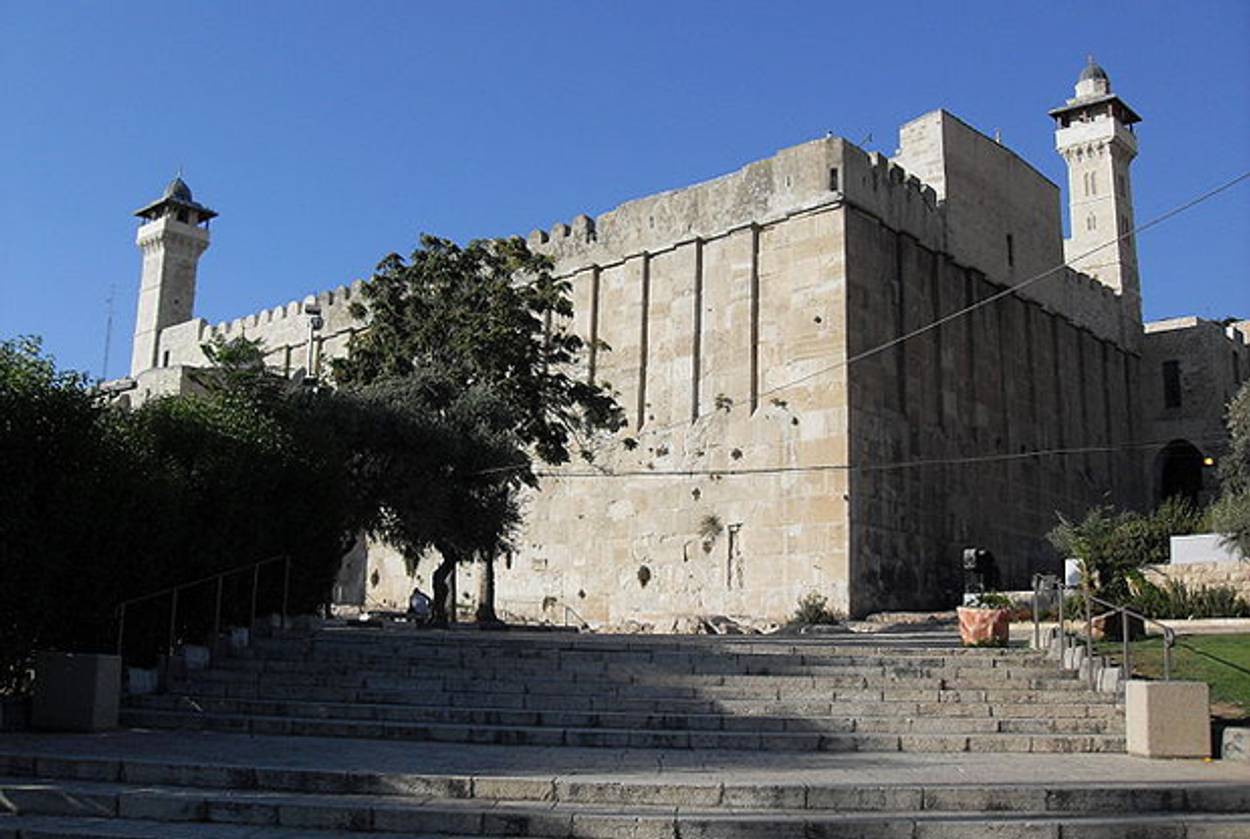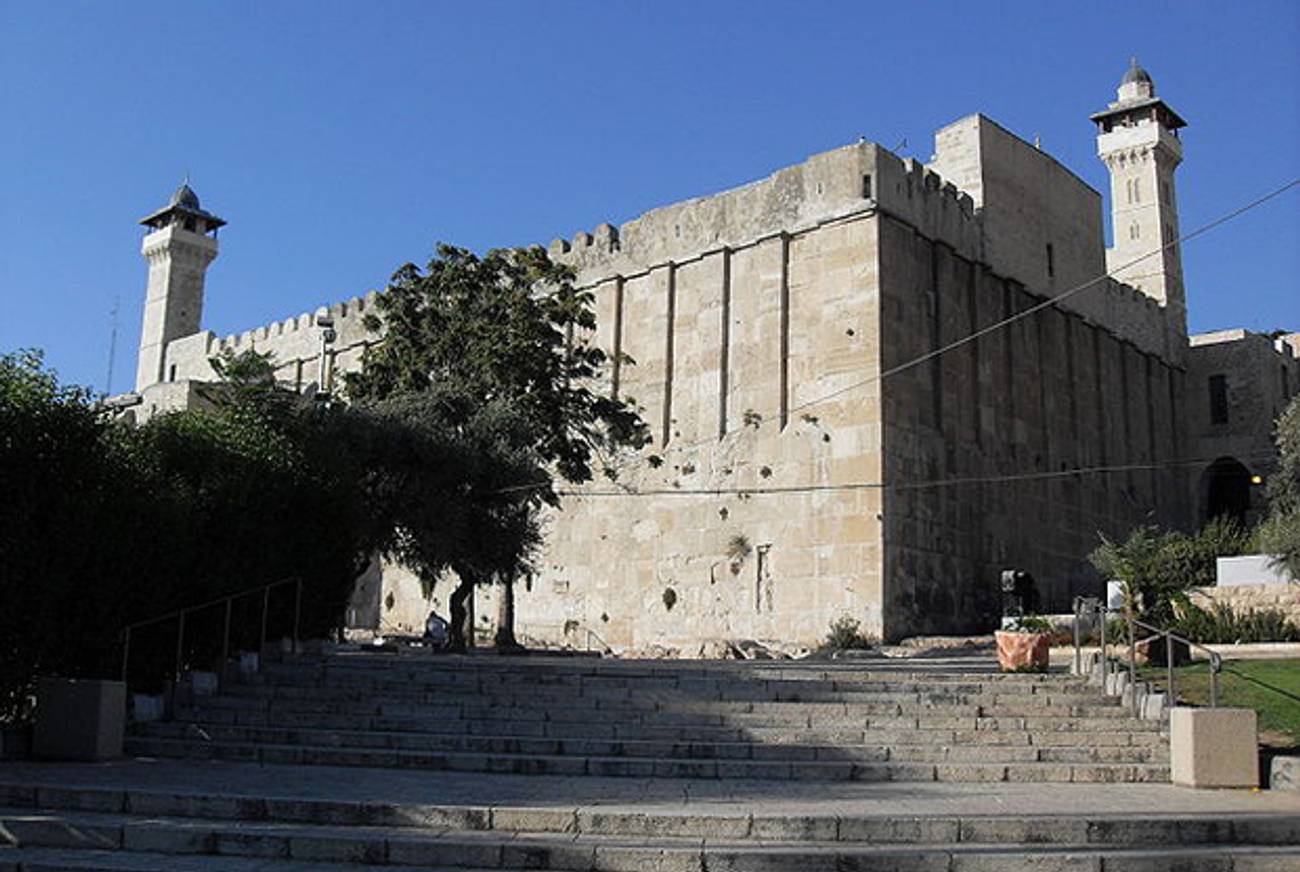Lunch With Baruch Goldstein, One Year Before the Hebron Massacre
A chance meeting with the settler, who killed 29 Muslims this week in 1994




Exactly one year before he committed mass murder, Baruch Goldstein served me a delicious lunch. Of course, in the late winter of 1993 I had no idea that the next year—February 25, 1994, to be exact—my one-time host would gun down Muslim worshippers in Hebron, killed 29 and wounding 125 more, in what is known as the Cave of the Patriarchs massacre. At that point, he was just one of the many strangers I met in Israel on my gap year between high school and college.
My primary goal for the year was to explore as much of the country as possible, and to try to meet people from all walks of life. I had enjoyed a very comfortable childhood in the fishbowl of my American suburb, but I also felt a bit stifled by the uniformity of my hometown. My year in Israel was going to be my first chance to interact with people who were not all exactly like me.
One of the first people I met was a single, retired schoolteacher from New York who had moved to Israel in the 1980s. Vivian was my friend’s aunt, and I tagged along to Gush Katif for a weekend in early fall. Along with others in this Gaza Strip settlement, Vivian had become a farmer, growing bug-free broccoli in hothouses to satisfy the stringent kosher demands of the ultra-Orthodox. She was so excited about the broccoli. It was all we talked about, and all we ate. Although technically Vivian was a settler, living in an outpost in a politically charged area, she didn’t seem to have a strong position on the Israeli-Arab situation unfolding around her. What mattered were her book-filled adobe house, the broccoli farm, and her proximity to the ocean.
I came back to my apartment Jerusalem with a renewed sense of excitement and purpose. I was going to meet weird people! I vowed to spend as many weekends as possible out of my comfort zone, away from tourist traps, and with people I barely knew. Luckily, the few degrees of separation within the Jewish world made this easy to arrange.
By the beginning of January I had traveled north, south, and to random tiny villages in the middle. In Bat Yam I met Anat, a tall, native-born redhead whose main claim to fame was her sexual conquests of a soldier in every unit – even the elite Sayeret Matkal. She proudly showed me her scorecard with all of its check marks. Near Caesarea I spent the weekend with Sharon, a transplanted Brit who was doing archaeological work on the ancient Roman aqueducts. I was bored to tears listening to the descriptions of various pottery shards, but she fried delicious fish so at least I ate well.
I went to great lengths to comply with the strictures of the different communities I visited. To spend the weekend in the Hasidic neighborhood of Mea Shea’rim, I had to agree to dress modestly, not to speak to any of the men, and to sleep under the dining room table with just a blanket because there were no free beds in the house of 12. I spent much of my time with Shayna, the family’s placid 16-year-old daughter, but she primarily spoke Yiddish so we mostly just smiled at each other while plating chicken and potatoes in the kitchen.
In February, my friend Mia said her mother’s cousin knew someone who lived in Hebron and would be willing to host us for a weekend. Neither of us had been to the biblical city, so we jumped at the chance. Our host was another transplanted American, a doctor by the name of Baruch Goldstein. He was tired, he told us when we arrived, because he had been working the ambulance shift the previous night. But he wanted to walk us to the Cave of the Patriarchs anyway, so we could see the ancient holy site.
It was frightening walking with armed escorts through the streets, but I had gotten used to the constant presence of soldiers in Israel. I also kept quiet about the political situation in Hebron, which at that point was extremely tense. Although I am by nature quite outspoken, I had quickly learned that my visits with strangers were most enlightening when I listened more and spoke less.
Goldstein spoke about the difficulty of living in a hostile neighborhood. He told us about the frequent rock throwing between Jews and Arabs – enemies living practically on top of each other. As we walked through the city, Goldstein explained its biblical history in impressive detail. He seemed disappointed when Mia and I didn’t share his ecstatic excitement upon reaching the ancient tomb. To us it was just another biblical ruin.
The rest of the weekend in Hebron was nondescript. We ate, we slept, we played Jewish geography to see if we had any common friends in New York. Nothing Goldstein said or did seemed noteworthy or out of the ordinary. We said goodbye, with no intention to keep in touch. I thought I would never hear of him again.
When I heard about the massacre the following February, I felt a combination of shock, fear, and shame. I was embarrassed to have been associated with Goldstein, even if it was only for a matter of hours. It’s frightening to realize that one never really knows what lies behind a welcoming smile from a friendly stranger.
Previous: In Hebron, This Land Is … Whose Land?
Related: Up in Arms
Rebecca Wolf is a writer who lives with her husband and three children in New Jersey.